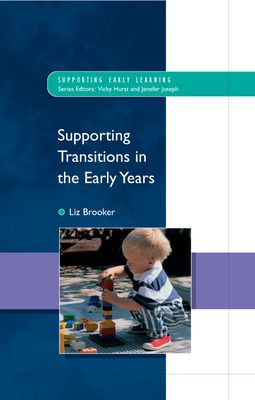Supporting Transitions in the Early Years
Receive via shipping:
- Colour, print bound version of the complete text
Introduction
Chapter 1. Understanding early transitions: more than starting school
Chapter 2. First steps: transitions from birth to three
Chapter 3. Bridging cultures: home, pre-school and school
Chapter 4. Continuities: stepping up through the system
Chapter 5. Children's perspectives: transitions around the world
Chapter 6. Making the grade: the role of assessment in transitions
Chapter 7. Transitions for life
Early Years Update
Supporting Transitions in the Early Years explores the whole range of early childhood transitions, rather than simply looking at starting school or pre-school. It helps parents, practitioners, policy-makers and Early Years students at every level, to understand and support the successive transitions made by young children from birth to five.
Starting from a discussion of the rapid pace of change in current societies, and children's need to acquire flexibility and resilience in adapting to change, it offers examples of transitions such as:
Babies and toddlers moving into under-3s carePre-schoolers moving into schoolReception children moving into formal learning classroomsSupport for the transitions of children with English as an additional language or special needsAt each stage, individual case studies are discussed in relation to relevant theories of development and learning, and contemporary perspectives on children's well-being and children's rights. The international case studies offer clear examples of the ways that adults in high-quality settings can work together with parents to strengthen children's positive dispositions.The book highlights key qualities - resilience, resourcefulness and reciprocity - which adults should seek to foster in children, to facilitate their current transitions and prepare them for a future of change. The author also underlines the importance of listening to children from birth onwards, if we are to offer the kind of caring and educative environments that will best support their well-being.

